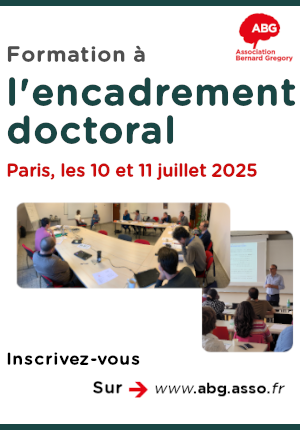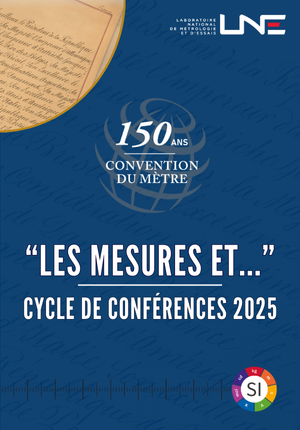Développement de photoréacteurs microfluidiques pour l'évaluation reproductible et quantitative de matériaux photoactifs, couplés à l'analyse en ligne par spectrométrie de masse et chromatographie en phase gazeuse // Development of microfluidic photoreact
|
ABG-132197
ADUM-66079 |
Thesis topic | |
| 2025-05-26 |
Université Paris-Saclay GS Sciences de l'ingénierie et des systèmes
Gif-sur-Yvette Cedex - Ile-de-France - France
Développement de photoréacteurs microfluidiques pour l'évaluation reproductible et quantitative de matériaux photoactifs, couplés à l'analyse en ligne par spectrométrie de masse et chromatographie en phase gazeuse // Development of microfluidic photoreact
- Electronics
microfluidique, photoréacteur, chimie analytique, analyse en ligne, chromatographie en gaz, spectrométrie de masse
microfluidics, photoreactor, analytical chemistry, in-line analysis, gas chromatography, mass spectrometry
microfluidics, photoreactor, analytical chemistry, in-line analysis, gas chromatography, mass spectrometry
Topic description
La mise au point de matériaux photoactifs performants (catalyseurs, semi-conducteurs, films sensibles) pour la conversion chimique sous irradiation lumineuse nécessite des méthodes d'évaluation à la fois précises, reproductibles et quantitatives. Les approches classiques en batch souffrent de limitations importantes : faible maîtrise du temps de séjour, gradients de température ou de lumière, faible surface spécifique exposée, et reproductibilité variable. Dans ce contexte, les photoréacteurs microfluidiques offrent une alternative prometteuse pour le criblage structuré et l'évaluation fine de matériaux photoactifs, notamment grâce à leur rapport surface/volume élevé, leur contrôle du débit et leur géométrie adaptable à diverses configurations d'irradiation.
Cette thèse, en lien avec le projet SUNRISE du PEPR LUMA, vise à concevoir, fabriquer et caractériser des microréacteurs photoniques spécifiquement adaptés à l'évaluation rigoureuse de matériaux photoactifs. L'objectif est de créer une plateforme capable de générer des données quantitatives et comparables sur les performances et la stabilité de ces matériaux, en conditions bien définies de débit, d'irradiation, et d'environnement réactionnel, puis de les coupler à des techniques analytiques de haut niveau (GC, MS) pour l'identification en ligne des produits générés.
Nous proposons de développer 4 axes au cours de ce projet de thèse : 1) développement, caractérisation et optimisation de la plateforme microfluidique pour la mesure en ligne de liquide et de gaz; 2) Mise en place de protocoles de dépôt des matériaux photoactifs 3) évaluation des performances photochimiques et validation du système avec des échantillons fournis (partenaires de SUNRISE) et sur la dégradation de polluant par photochimie (collaboration avec une thèse en cours au laboratoire) et 4) couplage du réacteur à des méthodes d'analyse en ligne (GC, MS).
------------------------------------------------------------------------------------------------------------------------------------------------------------------------
------------------------------------------------------------------------------------------------------------------------------------------------------------------------
The development of high performance photoactive materials (catalysts, semiconductors, sensitive films) for chemical conversion under light irradiation requires precise, reproducible and quantitative evaluation methods. Conventional batch approaches suffer from major limitations: poor control over residence time, temperature or light gradients, low exposed specific surface area and variable reproducibility. In this context, microfluidic photoreactors offer a promising alternative for structured screening and fine evaluation of photoactive materials, in particular thanks to their high surface/volume ratio, flow control and geometry adaptable to different irradiation configurations.
This work, linked to the PEPR LUMA SUNRISE project, aims to design, fabricate and characterize photonic microreactors specifically adapted to the fine evaluation of photoactive materials. The aim is to create a platform capable of generating quantitative and comparable data on the performance and stability of these materials, under well-defined conditions of throughput, irradiation and reaction environment, and then to couple them to high-level analytical techniques (GC, MS) for on-line identification of the products generated.
We propose to develop 4 axes during this thesis project: 1) development, characterization and optimization of the microfluidic platform for online liquid and gas measurement; 2) implementation of protocols for the deposition of photoactive materials 3) evaluation of photochemical performance and validation of the system with samples provided (SUNRISE partners) and on the degradation of pollutant by photochemistry (collaboration with a thesis in progress at the laboratory) and 4) Coupling of the reactor to online analytical methods (GC, MS).
------------------------------------------------------------------------------------------------------------------------------------------------------------------------
------------------------------------------------------------------------------------------------------------------------------------------------------------------------
Début de la thèse : 01/10/2025
Cette thèse, en lien avec le projet SUNRISE du PEPR LUMA, vise à concevoir, fabriquer et caractériser des microréacteurs photoniques spécifiquement adaptés à l'évaluation rigoureuse de matériaux photoactifs. L'objectif est de créer une plateforme capable de générer des données quantitatives et comparables sur les performances et la stabilité de ces matériaux, en conditions bien définies de débit, d'irradiation, et d'environnement réactionnel, puis de les coupler à des techniques analytiques de haut niveau (GC, MS) pour l'identification en ligne des produits générés.
Nous proposons de développer 4 axes au cours de ce projet de thèse : 1) développement, caractérisation et optimisation de la plateforme microfluidique pour la mesure en ligne de liquide et de gaz; 2) Mise en place de protocoles de dépôt des matériaux photoactifs 3) évaluation des performances photochimiques et validation du système avec des échantillons fournis (partenaires de SUNRISE) et sur la dégradation de polluant par photochimie (collaboration avec une thèse en cours au laboratoire) et 4) couplage du réacteur à des méthodes d'analyse en ligne (GC, MS).
------------------------------------------------------------------------------------------------------------------------------------------------------------------------
------------------------------------------------------------------------------------------------------------------------------------------------------------------------
The development of high performance photoactive materials (catalysts, semiconductors, sensitive films) for chemical conversion under light irradiation requires precise, reproducible and quantitative evaluation methods. Conventional batch approaches suffer from major limitations: poor control over residence time, temperature or light gradients, low exposed specific surface area and variable reproducibility. In this context, microfluidic photoreactors offer a promising alternative for structured screening and fine evaluation of photoactive materials, in particular thanks to their high surface/volume ratio, flow control and geometry adaptable to different irradiation configurations.
This work, linked to the PEPR LUMA SUNRISE project, aims to design, fabricate and characterize photonic microreactors specifically adapted to the fine evaluation of photoactive materials. The aim is to create a platform capable of generating quantitative and comparable data on the performance and stability of these materials, under well-defined conditions of throughput, irradiation and reaction environment, and then to couple them to high-level analytical techniques (GC, MS) for on-line identification of the products generated.
We propose to develop 4 axes during this thesis project: 1) development, characterization and optimization of the microfluidic platform for online liquid and gas measurement; 2) implementation of protocols for the deposition of photoactive materials 3) evaluation of photochemical performance and validation of the system with samples provided (SUNRISE partners) and on the degradation of pollutant by photochemistry (collaboration with a thesis in progress at the laboratory) and 4) Coupling of the reactor to online analytical methods (GC, MS).
------------------------------------------------------------------------------------------------------------------------------------------------------------------------
------------------------------------------------------------------------------------------------------------------------------------------------------------------------
Début de la thèse : 01/10/2025
Funding category
Funding further details
Autre type de financement - Autre type de financement,
Presentation of host institution and host laboratory
Université Paris-Saclay GS Sciences de l'ingénierie et des systèmes
Institution awarding doctoral degree
Université Paris-Saclay GS Sciences de l'ingénierie et des systèmes
Graduate school
575 Electrical, Optical, Bio-physics and Engineering
Candidate's profile
Le/la candidat(e) devra démontrer un fort intérêt pour les approches expérimentales multidisciplinaires à l'interface de la chimie, des microtechnologies et de l'analyse instrumentale.
Compétences attendues (tout ou partie) :
Microfabrication (soft lithographie, impression 3D, photopolymérisation)
Notions en photochimie, photocatalyse ou chimie verte
Spectroscopie, photophysique appliquée
Analyse chimique (GC, MS)
Capacité de modélisation ou de traitement de données (COMSOL, Python)
The candidate should demonstrate a strong interest in multidisciplinary experimental approaches at the interface of chemistry, microtechnology and instrumental analysis. Expected skills (all or part) : Microfabrication (soft lithography, 3D printing, photopolymerization) Notions in photochemistry, photocatalysis or green chemistry Spectroscopy, applied photophysics Chemical analysis (GC, MS) Modelling and data processing skills (COMSOL, Python)
The candidate should demonstrate a strong interest in multidisciplinary experimental approaches at the interface of chemistry, microtechnology and instrumental analysis. Expected skills (all or part) : Microfabrication (soft lithography, 3D printing, photopolymerization) Notions in photochemistry, photocatalysis or green chemistry Spectroscopy, applied photophysics Chemical analysis (GC, MS) Modelling and data processing skills (COMSOL, Python)
2025-09-15
Apply
Close
Vous avez déjà un compte ?
Nouvel utilisateur ?
More information about ABG?
Get ABG’s monthly newsletters including news, job offers, grants & fellowships and a selection of relevant events…
Discover our members
 CESI
CESI  ONERA - The French Aerospace Lab
ONERA - The French Aerospace Lab  MabDesign
MabDesign  Groupe AFNOR - Association française de normalisation
Groupe AFNOR - Association française de normalisation  Laboratoire National de Métrologie et d'Essais - LNE
Laboratoire National de Métrologie et d'Essais - LNE 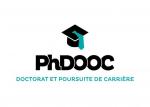 PhDOOC
PhDOOC  MabDesign
MabDesign  Aérocentre, Pôle d'excellence régional
Aérocentre, Pôle d'excellence régional  Généthon
Généthon  Ifremer
Ifremer  Institut Sup'biotech de Paris
Institut Sup'biotech de Paris  Tecknowmetrix
Tecknowmetrix  ASNR - Autorité de sûreté nucléaire et de radioprotection - Siège
ASNR - Autorité de sûreté nucléaire et de radioprotection - Siège  Nokia Bell Labs France
Nokia Bell Labs France  SUEZ
SUEZ 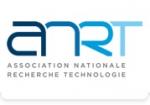 ANRT
ANRT 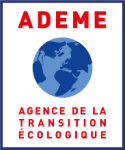 ADEME
ADEME 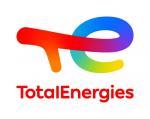 TotalEnergies
TotalEnergies  CASDEN
CASDEN



